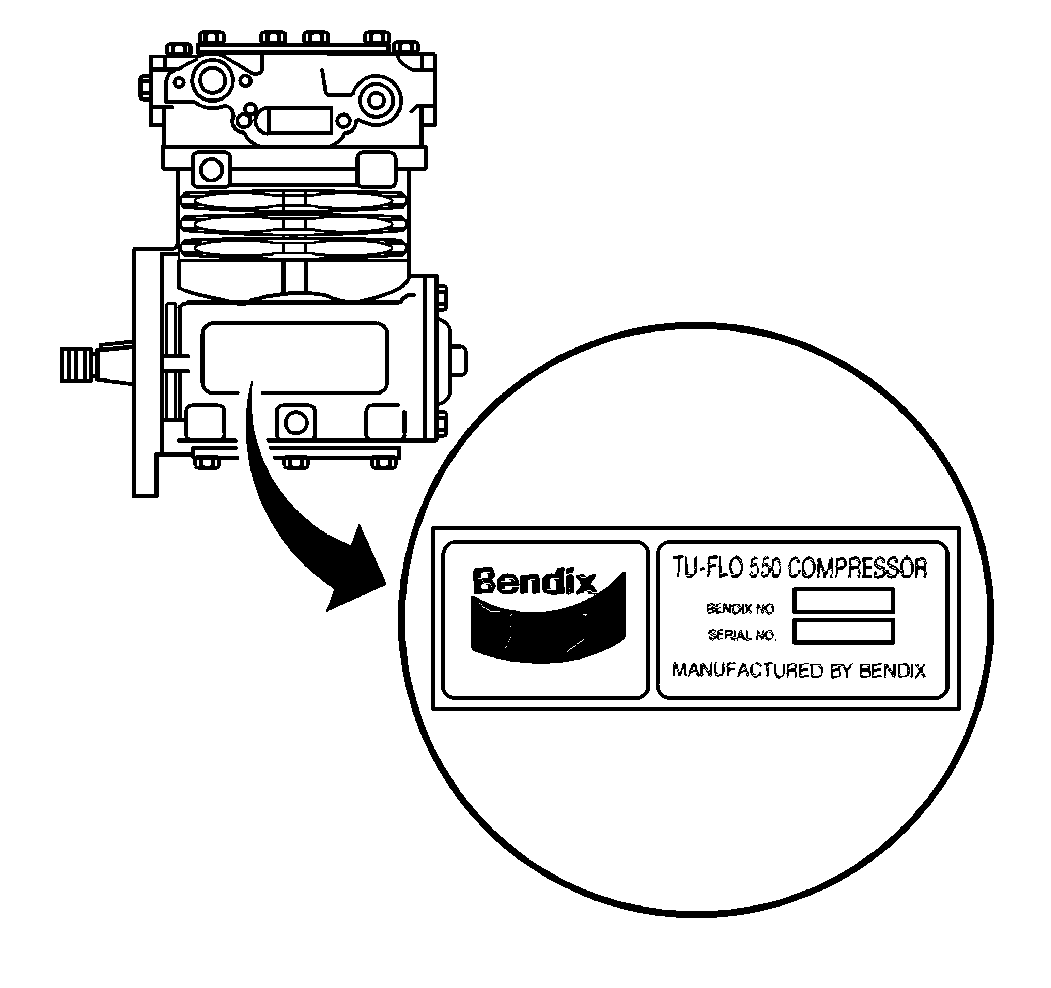The air compressor is a two cylinder single-stage, reciprocating air compressor. The air compressor consists of two major subassemblies; the cylinder head and the crankcase.
The cylinder head is an iron casting. The cylinder head houses the following components:
| • | The inlet |
| • | The discharge |
| • | The unloader valving |
| • | The inlet port |
| • | The water inlet |
| • | The water outlet port |
The governor mounts to the side of the cylinder head.
The crankcase houses the following components.
| • | The cylinder bores |
| • | The pistons |
| • | The crankshaft |
| • | The main bearings |
The crankcase provides a flanged mounting surface.
The air compressor is gear driven by the vehicle engine and operates continuously while the engine runs. The air compressor unloading mechanism and the governor control the actual compression of air. The air compressor is flange mounted to the engine. The engine oil lubrication system lubricates the air compressor. The engine cooling system cools the air compressor.

The identification plate, attached to the air compressor crankcase, is the location of the model identification number.
An coolant inlet hose provides coolant from the water pump housing to the air compressor. A coolant outlet hose carries hot coolant from the air compressor back to the engine.
The vehicle's engine provides a continuous supply of oil to the air compressor. A hose assembly from the engine block to the air compressor oil inlet supplies oil. An oil passage in the air compressor crankcase allows oil to lubricate the connecting rod crankshaft bearings. The connecting rod wrist pin bushings and the crankshaft ball bearings are spray lubricated. An oil return passage in the mounting flange allows the oil to drain back into the engine crankcase.
As the air compressor pistons move downward, the inlet valve of the cylinder head draws air into the cylinder. This is the intake stroke. As the piston begins to move upward, the inlet valve closes and the air above the piston compresses. This is the compression stroke. When air pressure in the cylinder becomes greater than the air pressure in the reservoirs, the discharge valve raises off the seat allowing air to pass through the discharge port and out of the discharge line. As the intake stroke begins, the discharge valve spring and the air pressure in the discharge line return the discharge valve to the seat. This prevents the compressed air in the discharge line from returning to the cylinder bore as the intake and compression cycles repeat.
